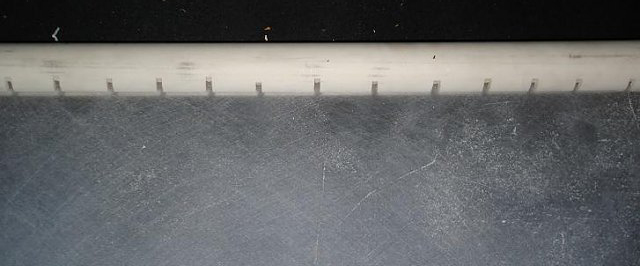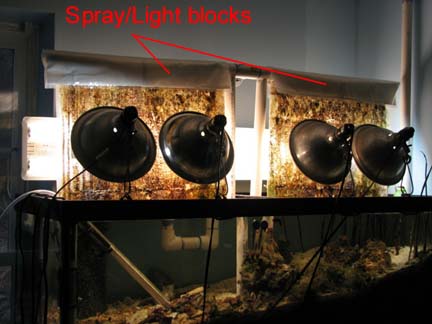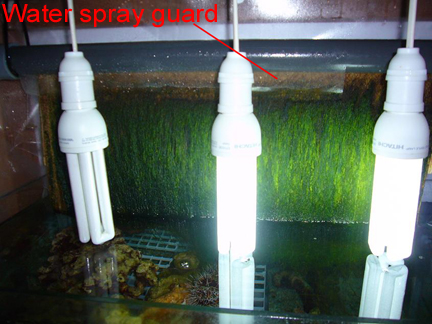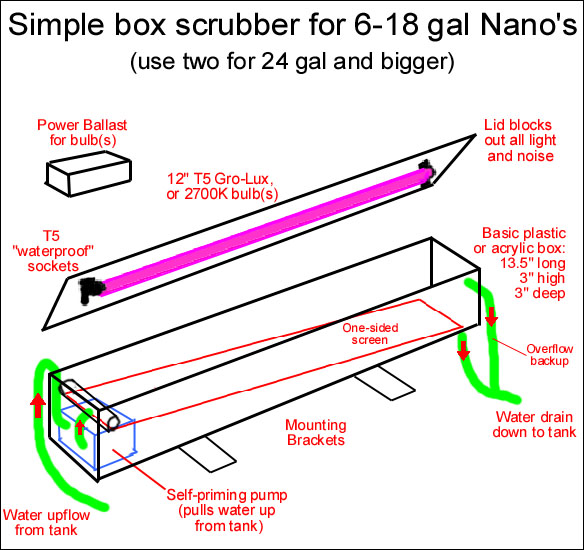Part 6 of 7:
"The Food of Reefs, Part 6: Particulate Organic Matter" by Eric Borneman
http://www.reefkeeping.com/issues/2003-03/eb/index.php
"This article will address a very important food to corals and many other animals, particulate organic material (POM). This food source has many names, including detritus [waste], floculant organic matter, reef snow, marine snow, and suspended organic material.
"Not so long ago, marine aquarists made every attempt to be assured that their water column was "polished." I never fully understood the term, but the premise was that a clean water column was a good water column. Various means were employed to accomplish this, including the use of various power filters, mechanical flosses and screens, sterilizers, ozonizers, canister filters, diatom filters, foam fractionators [skimmers] and many other devices. [However] "polished" water might not be in the best interest of reef tanks or corals.
"Particulate organic material has its origins in life, being composed by and large of the remains, secretions and excretions of living organisms. On coral reefs, it is composed mostly of dead algae, bacteria, mucus, and feces.
"When food, waste, or other particulate organic matter (POM) is trapped, especially in an aerobic environment, it is acted upon by several types of bacteria that break down the substances into more basic dissolved organic and inorganic components. Some of these breakdown components are organic acids and refractory compounds that can impart a yellow tint to the water column. This yellowing has been called "gelbstoff." However, both the substances remaining after [various types of] filtration, as well as the substances removed by the filtration, can be utilized by the life in the aquaria, and are taken up by corals, sponges, some other invertebrates, phytoplankton, bacteria, and algae.
"On reef slopes and crests, the [waste] material is mostly coral mucus, while over the reef flats and lagoons, the material is mostly algae and fecal matter. This material, by itself, has a high carbon content. However, it acts as a substrate for bacteria, ciliates, cyanobacteria, and other microorganisms that coat the particles. Bacteria can even convert dissolved organic material (DOM) into particulate organic material (POM) by aggregating it in the presence of carbon. This provides a substantially enriched particle replete with amino acids and valuably higher nitrogen content. As such, detritus [waste] becomes a very nutritious food source for many organisms. It is such a complex "dirt", that detritus has been described as a completely self-contained microhabitat of its own, with plant, animal and microbial components, and its own "built-in" nutrient source.
"Another major consumer group of detritus is the zooplankton. These small animals, themselves a very important food sources to reef consumers, have been found to have 90% of their gut contents composed of detritus. Mucus-producing animals, like corals, tend to trap detritus, and the material is either removed or consumed by ciliary action across the tissue surface. Many fish also consume coral mucus, and any attached particulate organic material"
"Detritus [waste] forms the basis of several food webs that are part of a balanced autotrophic/heterotrophic community. It also plays a role in establishing various levels of nutrient production and decomposition. It is this material that is the principal food source for the many bacterial species that work in various nitrification and denitrification activities. Before reaching the microbial community, however, it acts as a food source for the smaller consumers such as amphipods, copepods, errant polychaetes, protozoans, flagellates, ciliates and other animals whose activities contribute to the stability and productivity of a coral reef and a coral reef aquarium.
"It is the microbial community, though, that is most important in the detrital processes. On the reef, the productivity of bacteria (both aerobic and anaerobic oxidation and reduction, including important sulfate reduction) depends heavily on detritus. Without this microbial community, coral reefs would cease to exist.
"Corals, in particular, are notable for their consumption of detritus. All corals studied feed to some degree on POM, and coral communities have been found to remove half of the POM present on some reefs. So prevalent is this material, that it is termed "reef snow" in the wild. [...] Given the ability of so many corals to consume and utilize this material, along with its relatively high abundance and ability to provide up to 100% of corals' carbon and nitrogen requirements, it may now (hopefully) seem rather foolish to attempt to remove this material from aquaria.




